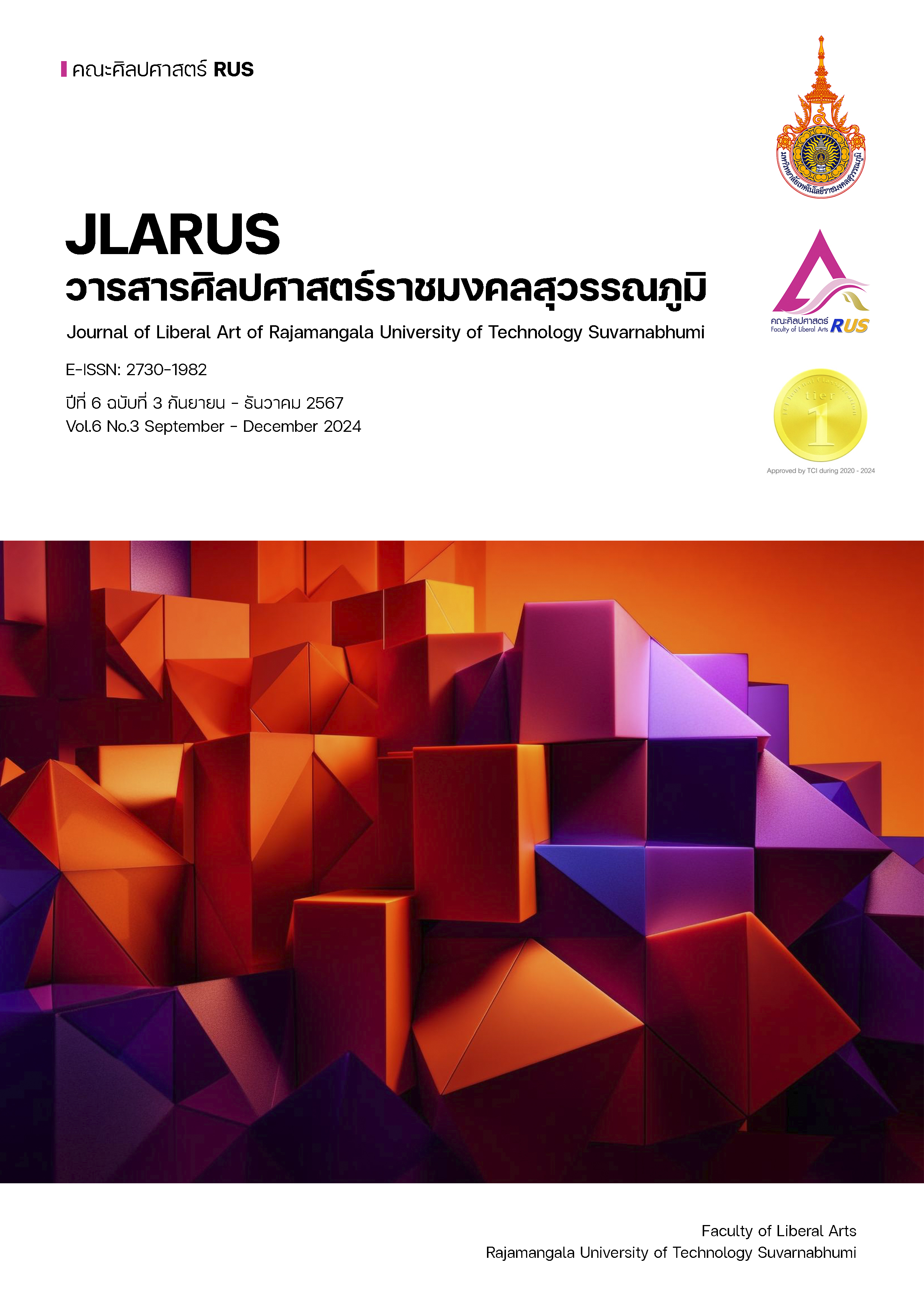THE DEVELOPMENT OF PROBLEM-SOLVING SKILLS AND CREATIVE WRITING SKILLS OF GRADE 5 STUDENTS USING PROBLEM-BASED LEARNING AND FLIPPED CLASSROOM
Main Article Content
Abstract
This research aimed to achieve two primary objectives: 1) to develop problem-solving skills of Grade 5 students by employing a problem-based learning approach in conjunction with the flipped classroom concept, with the target of 80% of the students achieving a score of 70% or higher, and 2) to enhance creative writing skills of Grade 5 students using the same combined approach, again targeting 80% of the students to score 70% or higher. The study was designed as action research, focusing on 24 Grade 5 students from Romklao School who were enrolled in the second semester of the 2023 academic year. These students were selected through purposive sampling. The instruments used for data collection included detailed lesson plans, student behavior observation forms, learning outcome records, student interviews, end-cycle problem-solving skill assessments, and end-cycle creative writing skill assessments. Quantitative data were analyzed using mean, standard deviation, and percentage calculations, while qualitative data were analyzed through content analysis. The research findings revealed that: 1) 83.33% of the students exceeded the set criteria for problem-solving skills, achieving an average score of 85.69%, which was significantly higher than the predetermined benchmark, and 2) 83.33% of the students surpassed the criteria for creative writing skills, with an average score of 84.72%, also well above the set standard.
These results indicated the effectiveness of the problem-based learning approach combined with the flipped classroom concept in improving both problem-solving and creative writing skills among Grade 5 students, suggesting that this method could be a valuable strategy for broader educational applications. The study underscores the potential benefits of integrating innovative teaching methodologies to foster essential skills in primary education.
Article Details

This work is licensed under a Creative Commons Attribution-NonCommercial-NoDerivatives 4.0 International License.
References
กรมวิชาการ กระทรวงศึกษาธิการ. (2551). หลักสูตรสถานศึกษาขั้นพื้นฐาน พุทธศักราช 2551. กรุงเทพมหานคร: ชุมนุมสหกรณ์การเกษตรแห่งประเทศไทย.
กระทรวงศึกษาธิการการ. (2542). พระราชบัญญัติการศึกษาแห่งชาติ พ.ศ. 2542 และแก้ไขเพิ่มเติม (ฉบับที่ 2). กรุงเทพมหานคร: คุรุสภาลาดพร้าว.
สถาบันทดสอบทางการศึกษาแห่งชาติ (องค์การมหาชน). (2566). ระบบประกาศและรายงานผลสอบ โอเน็ต. สืบค้น 9 สิงหาคม 2566. จาก http://www.newonetresult.niets.or.th/AnnouncementWeb/Login.aspx.
จงกล วจนะเสถียร. (2559). การพัฒนาความสามารถในการเขียนเชิงสร้างสรรค์ของนักเรียนชั้น ประถมศึกษาปีที่ 3 โดยการจัดกิจกรรมการเรียนรู้รูปแบบซินเนคติกส์. (วิทยานิพนธ์ปริญญา มหาบัณฑิต). นครปฐม: มหาวิทยาลัยศิลปากร.
ดนิตา ดวงวิไล. (2565). นวัตกรรมการจัดการเรียนรู้ สำหรับครูภาษาไทย. ขอนแก่น: คณะศึกษาศาสตร์ มหาวิทยาลัยขอนแก่น.
สำนักงานเลขาธิการสภาการศึกษา. (2550). การจัดการเรียนรู้แบบใช้ปัญหาเป็นฐาน. กรุงเทพมหานคร: โรงพิมพ์ชุมนุมสหกรณ์การเกษตรแห่งประเทศไทย.
สิทธิพล อาจอินทร์. (2564). ศาสตร์และศิลป์การจัดการเรียนรู้ในศตวรรษที่ 21. ขอนแก่น: คณะศึกษาศาสตร์ มหาวิทยาลัยขอนแก่น.
อัจฉรา ชีวพันธ์. (2547). กิจกรรมการเขียนเชิงสร้างสรรค์ในชั้นประถมศึกษา. (พิมพ์ครั้งที่ 5). กรุงเทพมหานคร: สำนักพิมพ์แห่งจุฬาลงกรณ์มหาวิทยาลัย.
Charles, R., Lester, F., & O’Daffer, P. (1987). How to evaluate progress: in problem solving. New York: The National Council of Teachers of Mathematics.
Dewey, J. (1963). Experience and Education. New York: Macmillan Publishing Company.
Gerstein, J. (2011). The Flipped Classroom Model: A Full Picture. Retrieved September 12, 2016, from https://usergeneratededucation. wordpress.com/2011/06/13/the-flipped-classroom-model-a-full-picture/.
Kemmis, S. & McTaggart, R. (1992). The Action Research Planner (3rd ed.). Geelong:
Deakin University Press.


